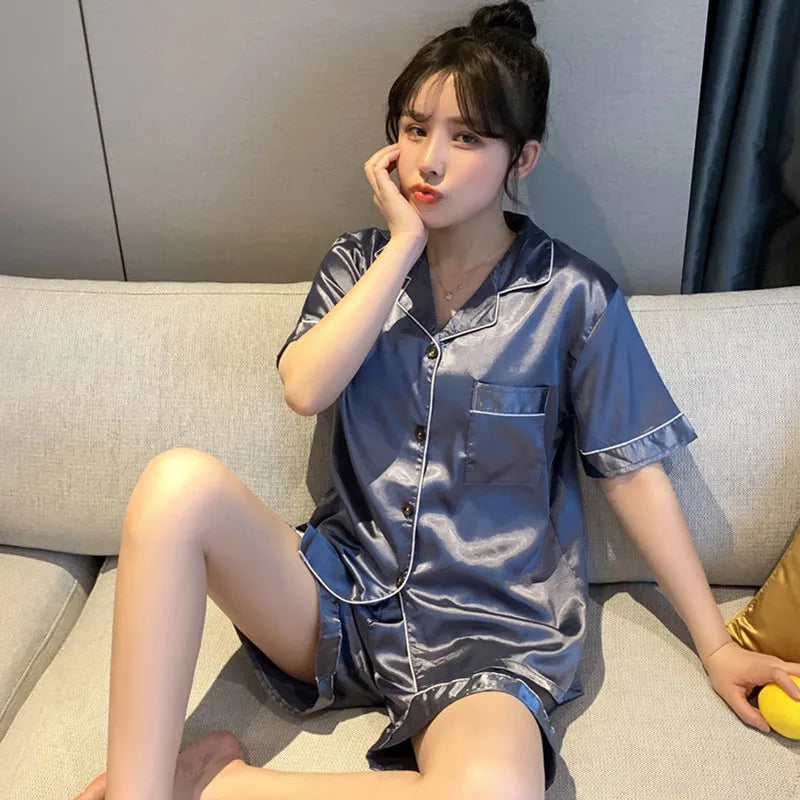What Were Pajamas Called in the 1800s? A Journey Through Sleepwear History
Table of Contents
- Introduction
- The Origins of Sleepwear
- The Sleepwear of the 1800s
- The Cultural Significance of Sleepwear
- Pajamas in the Late 19th Century
- Modern Influence of 1800s Sleepwear
- Conclusion
- FAQ
Introduction
Have you ever curled up in your favorite pajamas and thought about the history behind them? It’s easy to overlook the evolution of something as simple as sleepwear, yet the journey of pajamas is both intriguing and rich. In the 1800s, what we now refer to as pajamas were known by various names and took on many forms, reflecting cultural, social, and economic changes of the time.
During this era, sleepwear was not merely utilitarian; it was a reflection of one’s status, lifestyle, and even the societal norms of the time. Understanding what pajamas were called in the 1800s can provide us with insights into how clothing has transformed and perhaps even inspire our choices today.
By the end of this blog post, we invite you to explore the evolution of sleepwear, the various terms used to describe it in the 1800s, and how these historical garments have influenced modern designs. We’ll examine different styles, the materials used, and the societal implications of sleepwear during this period.
Join us as we delve into the fascinating world of 19th-century sleepwear, uncovering the garments that shaped our understanding of comfort and elegance. We’ll take a close look at nightgowns, night-jackets, wrappers, and the evolving perception of pajamas, leading to the contemporary styles we cherish today.
The Origins of Sleepwear
A Brief Historical Context
The concept of sleepwear has existed for centuries, with early forms often being nothing more than undergarments or simple shifts. However, by the 19th century, sleepwear began to take on more defined shapes and cultural significance. The Victorian era marked a pivotal change in how people viewed clothing for rest, particularly for women, who were expected to adhere to strict societal standards of modesty and appearance even in the privacy of their homes.
During this time, the idea of separate clothing for sleeping became more popular, especially among the upper classes. The motivations behind these changes were as much about comfort as they were about societal norms, which dictated that even in sleep, one should maintain a certain decorum.
The Etymology of Pajamas
Interestingly, the term “pajamas” itself traces its roots back to the Persian word "pāy-jāma," which means “leg garment.” The word made its way into English through the Urdu language, reflecting the influence of Indian culture on Western fashion during the colonial period. Although the term was not commonly used in the West until the late 19th century, it encapsulates the evolution of sleepwear from practical to fashionable.
The Sleepwear of the 1800s
Nightgowns: The Prevalent Choice
In the early 1800s, the most common sleepwear for women was the nightgown. This garment typically featured long sleeves, high collars, and a straight-cut design that mirrored the chemises of the time. Often made from cotton, linen, or silk, nightgowns were simple yet elegant, designed primarily for comfort.
Nightgowns were not merely items for sleeping; they were often worn during the day when women found themselves unwell or in their boudoirs. The wealthy could often be seen entertaining guests in their nightgowns, showcasing the garment's dual purpose.
Night-Jackets: A Layer of Comfort
By the mid-1800s, night-jackets emerged as a popular addition to women’s sleepwear. These waist- or hip-length garments were designed to be worn over nightgowns, providing additional warmth and modesty. Night-jackets evolved from basic shirt-like designs to more tailored pieces, often embellished with lace and embroidery, reflecting the opulence associated with Victorian fashion.
Women would frequently wear night-jackets when inviting guests into their bedrooms or while partaking in morning routines. The ability to look fashionable while remaining comfortable became a significant aspect of women’s nightwear during this time.
The Rise of the Wrapper and Peignoir
In addition to nightgowns and night-jackets, wrappers and peignoirs began to appear in women’s wardrobes. Wrappers were often made of luxurious fabrics and designed to be worn over a full set of undergarments, providing an elegant layer for modesty. They were tailored to accentuate the figure, with intricate designs that showcased the wearer’s social standing.
Peignoirs, on the other hand, were lightweight robes that women wore while preparing for the day or attending to personal grooming rituals. While they were practical, peignoirs also served a fashionable purpose, often worn during social gatherings at home. By the late 1800s, these garments had grown increasingly ornate, further emphasizing the social expectations placed on women.
Men’s Sleepwear: A Different Approach
While the focus of sleepwear in the 1800s often centered on women, men also had their own styles. Early pajamas for men were referred to as "lounging attire," influenced by the garments worn by Indian men. These loose-fitting trousers, sometimes paired with a simple shirt, began to gain popularity as casual wear.
By the end of the 19th century, the concept of sleepwear for men transformed significantly, with designs becoming more tailored and sophisticated, paralleling the evolving ideas of masculinity and fashion.
The Cultural Significance of Sleepwear
A Reflection of Social Status
Throughout the 1800s, sleepwear was more than just clothing; it was a reflection of one’s status within society. The wealthy often adorned themselves in elaborately designed nightgowns and wrappers, while the less fortunate typically resorted to simpler garments. This distinction underscored the growing divide between social classes and the importance of appearance, even in the privacy of one’s home.
Gender Norms and Sleepwear
The expectations surrounding sleepwear were heavily gendered. For women, the pressure to maintain an image of modesty and elegance was paramount. Nightgowns and wrappers became a means for women to express their femininity within the confines of societal norms.
Conversely, men’s sleepwear was less focused on appearance and more on comfort and functionality. This divergence highlighted broader gender norms of the time, where women were often judged by their appearance, while men were granted more leniency in their attire.
The Shift Towards Comfort
As the century progressed, the growing emphasis on comfort began to reshape attitudes towards sleepwear. With the advent of more relaxed designs and the introduction of softer fabrics, the 1800s marked the beginning of a shift that would carry into the 20th century. This era laid the groundwork for the modern understanding of sleepwear as not just functional, but also comfortable and stylish.
Pajamas in the Late 19th Century
The Transition to Modern Pajamas
By the late 1800s, pajamas began to emerge as a distinct form of sleepwear, primarily for men. The adoption of the term "pajama" coincided with changing attitudes toward comfort and leisure. Interestingly, the Victorian era's constraints began to loosen, allowing for a more relaxed interpretation of appropriate sleepwear.
The evolution of pajamas into the Western world was influenced by the increasing popularity of Indian and Asian garments, which were perceived as exotic and novel. By the dawn of the 20th century, pajamas, often designed as matching sets, became synonymous with leisure and comfort.
The Impact of Fashion Trends
As the 19th century drew to a close, fashion began to reflect the changing social landscape. The rise of the suffragette movement and the flapper era signaled a shift in women’s roles, leading to more liberated and comfortable clothing choices. This change would eventually lead to the popularization of pajama sets for women, which would become a staple in women’s fashion.
Modern Influence of 1800s Sleepwear
The Legacy of Historical Sleepwear
Today, we can see the lasting impact of 1800s sleepwear on contemporary fashion. The elegant designs of nightgowns, wraps, and pajamas have inspired modern interpretations that prioritize both style and comfort. Brands like Relaxed Nights celebrate this legacy by crafting premium nightwear that embodies the timeless elegance and comfort that women deserve.
Our commitment at Relaxed Nights is to transform how women experience their evenings, nights, and mornings. We believe that every woman should feel both comfortable and beautiful, and our collection of nightgowns, pajamas, and wraps is designed to help you embrace this ideal.
Contemporary Styles Inspired by the Past
Modern sleepwear borrows heavily from the historical styles of the 1800s. Today’s nightgowns often feature luxurious fabrics and elegant designs reminiscent of Victorian-era garments. Similarly, pajama sets for women often draw inspiration from men’s sleepwear, combining comfort with chic design elements.
At Relaxed Nights, our nightgowns are crafted from the finest materials, ensuring softness, breathability, and durability. Whether you choose a classic nightgown or a stylish pajama set, our collection allows you to unwind in style, just as women did in the 1800s.
Conclusion
The evolution of sleepwear from the 1800s to today has been a fascinating journey, marked by cultural shifts and changing perceptions of comfort and style. Understanding what pajamas were called in the 1800s provides us with valuable insights into social norms, gender roles, and the significance of personal expression through clothing.
As we reflect on the past, we see how historical garments have influenced modern designs, creating a blend of comfort and elegance that is as relevant today as it was over a century ago.
At Relaxed Nights, we honor this legacy by offering a curated collection of nightwear that empowers women to feel beautiful and comfortable. Whether you’re looking for a classic nightgown or a chic pajama set, our commitment to quality and craftsmanship ensures you’ll find the perfect piece to elevate your nighttime routine.
FAQ
What were pajamas called in the 1800s?
In the 1800s, pajamas were often referred to as nightgowns, night-jackets, wrappers, and peignoirs. The term "pajama" itself became popular later in the century, especially for men’s sleepwear.
How did sleepwear evolve over the 19th century?
Sleepwear evolved from simple nightgowns and shifts to more elaborate garments, including night-jackets and wrappers, reflecting changes in societal norms and the growing emphasis on comfort.
What materials were used for sleepwear in the 1800s?
Sleepwear in the 1800s was commonly made from cotton, linen, silk, and flannel, with fabrics chosen for their comfort and suitability for the season.
How did social norms influence sleepwear?
Social norms dictated that women should maintain an image of modesty and elegance even in sleepwear, leading to the development of various styles that reflected their social status.
What modern sleepwear styles are inspired by the 1800s?
Modern sleepwear styles often borrow elements from historical designs, such as elegant nightgowns and matching pajama sets, blending traditional aesthetics with contemporary comfort.
Where can I find premium nightwear inspired by historical styles?
At Relaxed Nights, we offer a beautiful collection of nightgowns, pajamas, and wraps that embody the elegance and comfort of historical sleepwear while catering to modern preferences. Explore our collection to find the perfect piece for your nighttime routine.



